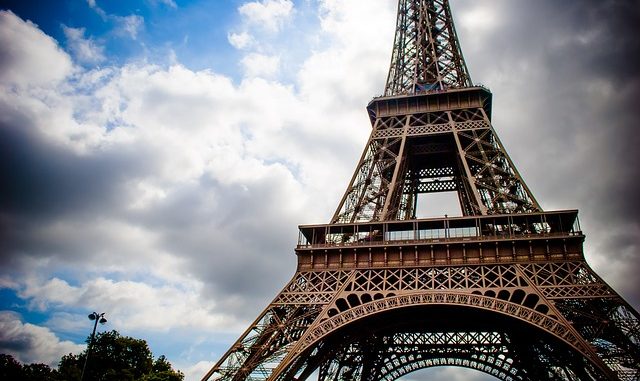
You only need a glimpse to know what they are: the barest outline of the Eiffel Tower or a few flying buttresses of Notre Dame are usually enough to identify the most famous Paris attractions. Located in one of the best known and most visited cities in the world, Paris’ top sites are, in fact, so popular and so heavily visited that touring the city can sometimes feel like pushing through a sea of tourists as you each struggle to complete the same sightseeing checklist.
It shouldn't feel this way! Paris is a huge city filled with diverse sights, some better known than others. It’s not difficult to step off the tourist trail and find yourself in authentic Paris, surrounded by native Parisians and visiting places that don’t have their images plastered on every dish towel and ashtray filling the tourist shops. However, a desire to see a more unique and realistic view of Paris doesn’t mean you should skip the main attractions. It would be an odd (and likely disappointing) itinerary that didn’t include the Eiffel Tower or the Louvre.
The key is to find a balance between the popular attractions that define our image of Paris and the lesser-known sights that let you see another side of the city and get a better idea of what Paris is like for locals.
With that in mind, I’ve compiled a list of the top 13 Paris attractions and organized them into four categories: architecture, museums, churches, and parks. Together, these categories make up much of our popular vision of Paris. For each category, the best-known sight (or sights) is listed first, followed by two lesser-known but equally enjoyable options. At the end of the guide, I’ve included a three-day itinerary you can follow on your visit to Paris, along with ways to customize it to your particular interests. This itinerary will introduce you to off-the-radar places rarely visited by tourists as well as give insider tips and guidelines for visiting some of the most popular Paris attractions.
The Top 13 Places to Visit in Paris
Architecture
- Eiffel Tower
- Arc de Triomphe
- Palais Garnier
Museums
- Louvre
- Musée d’Orsay
- Musée Rodin
- Musée du quai Branly
Churches
- Notre Dame Cathedral
- Sacré-Coeur Basilica
- St Denis Basilica
Parks
- Luxembourg Gardens
- Cimetiere de Pere Lachaise
- Parc des Buttes-Chaumont
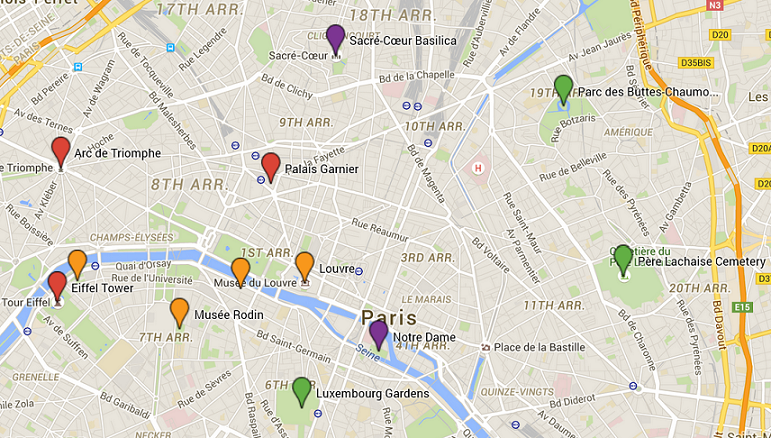
Here's a map of 12 of the 13 locations (St. Denis is to the north). You can also view the map online.
Architecture
Best Known: The Eiffel Tower
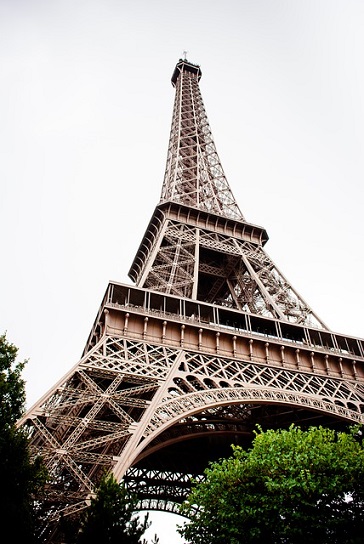
The worldwide symbol of Paris, the Eiffel Tower is about as “must-see” as an attraction can get. It hasn't always been so popular though. There’s a legend that famed French writer Guy de Maupassant hated the Eiffel Tower so intensely that every day he’d eat lunch under it because it was the only place in the city where he couldn’t see it.
These days it’s quite easy to wander around many parts of Paris without catching a glimpse of the Eiffel Tower, so you should try to make your first sight of it memorable. One of the grandest views is at the Trocadéro Metro stop. While there are stops that are closer to the tower, none can match the view of the Eiffel Tower suddenly springing into existence and filling most of the skyline as you step out of the station. The best times for viewing the Eiffel Tower are early in the morning, before most tourists and vendors have gotten up, and at night, when the tower lights up every hour, on the hour. For five minutes the Eiffel Tower is transformed into a sparkling structure that looks almost as if it has been covered with a fine piece of glittery lace.
It’s also possible to go up the Eiffel Tower. Eiffel Tower tickets are very popular so, if you choose to do this, be sure to reserve your tickets at least several days ahead of time (particularly in the summer) to avoid long lines. There are three different levels you can stop at, with most people finding the middle level to offer the best photo opportunities. The Eiffel Tower also has two restaurants, Le 58 Tour Eiffel and Le Jules Verne Restaurant. If you're interested in dining at one of them, book several weeks in advance to ensure you get a spot.
Arc de Triomphe
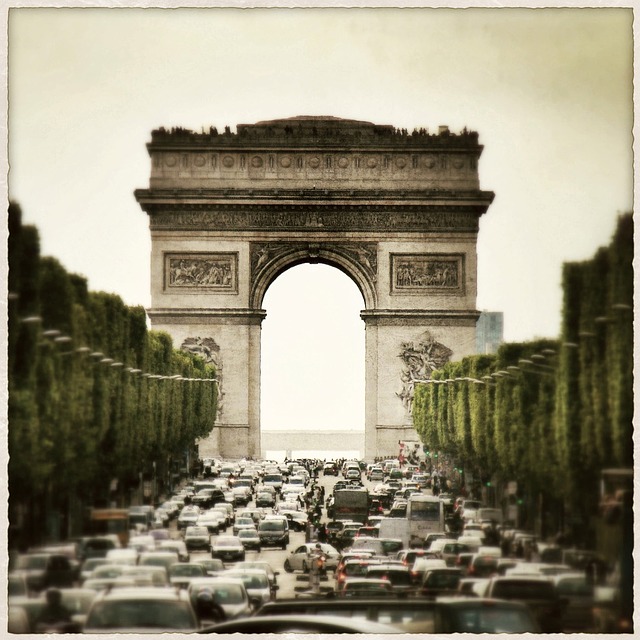
Another symbol of the city, the Arc de Triomphe is located at the western end of Paris’ most famous street, the Champs-Elysées. Built in honor of those who fought in the French Revolutionary and Napoleonic Wars, the Arc de Triomphe also contains the Tomb of the Unknown Soldier from WWI and an eternal flame in remembrance of those who died in both World Wars.
While most people are content to simply take a picture of the Arc de Triomphe and continue on with their shopping (or window shopping) along the Champs-Elysées, this site is in fact my pick for the best attraction in Paris to ascend to the top of. It’s much more popular to travel up the Eiffel Tower, but going to the top of the Arc de Triomphe is cheaper, far less crowded (no need for advance tickets), and, above all, it gives you a better view of Paris. This is because your view from the top of the Arc de Triomphe will include the Eiffel Tower anchoring Paris’ skyline which, as Monsieur Maupassant knew, the view from the Eiffel Tower does not.
Palais Garnier
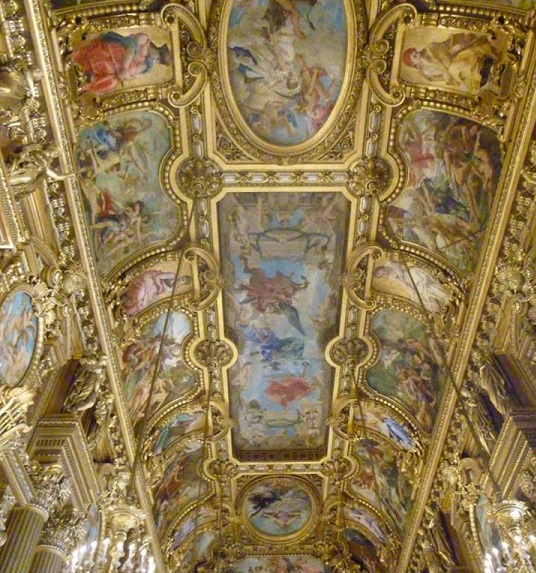
Located near two of Paris’ major department stores, the Palais Garnier is a historic opera house and one of the loveliest buildings in Paris. It’s also one of the most famous opera houses in the world and was the setting for the novel and musical Phantom of the Opera.
The best way to visit is during one of its evening performances (there are actually more ballet performances here than opera these days) when you can mingle with the hoi polloi of Paris. However, even people with no interest in attending a show will enjoy seeing the building’s opulent interior which is practically dripping with chandeliers and gold leaf. Highlights include the grand staircase, Grand Foyer, Salon de la Lune, and the Auditorium, with its vibrant ceiling painting by Marc Chagall.
This architectural sight is a nice contrast to some of Paris’ better known buildings, such as the Eiffel Tower and Notre Dame, since its interior is the main draw. The Palais Garnier can be visited daily by self-guided tours which allow access to each of the aforementioned sights as well as a small museum.
Museums
Best Known #1: The Louvre
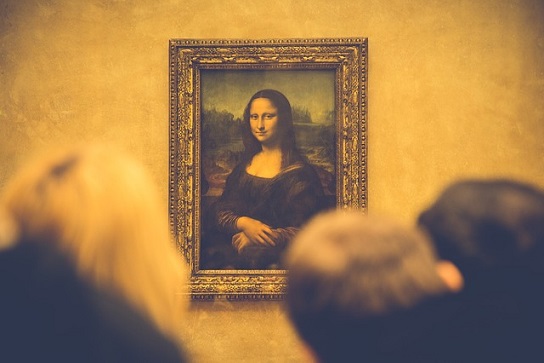
Not only the most visited museum in the world, the Louvre is also the largest, with over 35,000 objects on display, a thought that excites some but causes others to shudder at the idea of shuffling past miles of oil paintings. The trick to the Louvre is to use its size to your advantage; it’s collection is so vast that there’s truly something here to interest everyone. Hit the top attractions first: Mona Lisa, Winged Victory of Samothrace, and Venus de Milo are the three most popular pieces to view. Then, struggle free of the crowds and head to whichever galleries strike your fancy.
It’s helpful to review a map of the museum beforehand and arrive at the Louvre museum with a game plan. There are as many paintings as you could ever want to see, and, if you’re interested in something different, there are also galleries devoted to Islamic art, recreations of Napoleon’s apartments, sculpture gardens, and more.
You may find the Louvre quieter if you visit right when it opens or in the afternoons (particularly Wednesday when it’s open until 10pm), but, more often than not, there will be a line to purchase Louvre tickets and crowding around the main attractions. Particularly around the Mona Lisa, it’s best to just give in and accept the selfie sticks, then escape to a quieter part of the museum.
Best Known #2: Musée d’Orsay
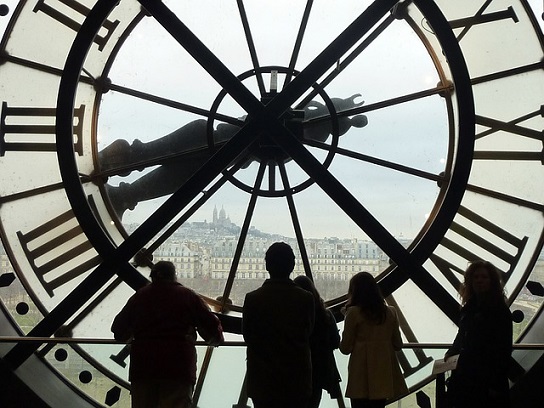
A shade less well-known than the Louvre, the Musée d’Orsay is often the preferred museum of travelers who visit both. A main reason for this is because the Musée d’Orsay is often seen as far less overwhelming than the Louvre: its lines are typically much shorter, its galleries less crowded, and it has roughly 4,000 works on display compared to the Louvre’s 35,000. Both museums have top-notch buildings, but people who prefer contemporary architecture may be more drawn to the Musée d’Orsay’s setting in an old railway station. While the Musée d’Orsay doesn’t have any pieces as famous as the Mona Lisa, it houses the largest collection of Impressionist and Post-Impressionist pieces in the world, including Monet’s Blue Water Lilies, Renoir’s Montmartre, and Van Gogh’s Church at Auvers.
Impressionist pieces are often very popular with visitors due to their bright colors and open composition, and if you are interested in this style of art, you may want to consider visiting the Musée d’Orsay in place of, or in addition to, the Louvre.
Musée Rodin
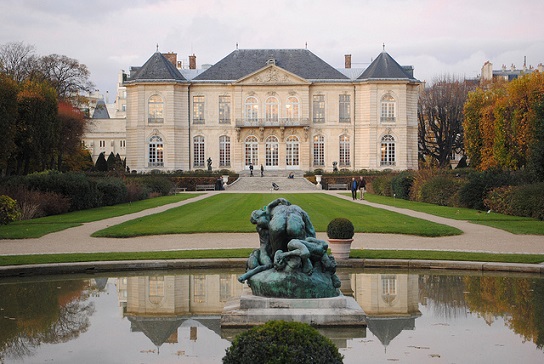
Image source: Vincius Pinheiro/Flickr
The Musée Rodin is the museum for people who hate museums or are burnt out from museums. It features pieces by Auguste Rodin, one of the world’s most famous sculptures, known for the realism and emotion in his works.
The majority of pieces are showcased in the attractive mansion Rodin used to live and work in, but the highlight is the adjacent sculpture garden. Here, visitors can wander through manicured gardens with some of Rodin’s most famous pieces, including The Thinker and The Gates of Hell, lining the paths and tucked into grassy alcoves. Visitors can also take a rest or read the newspaper in one of the chairs situated next to the pond at the edge of garden.
Wandering through the museum gardens on a sunny day is one of the most enjoyable ways I know to get a dose of art and culture. It’s possible to visit just the gardens, and, at 4 euros, it’s also one of the best deals in Paris.
Musée du quai Branly
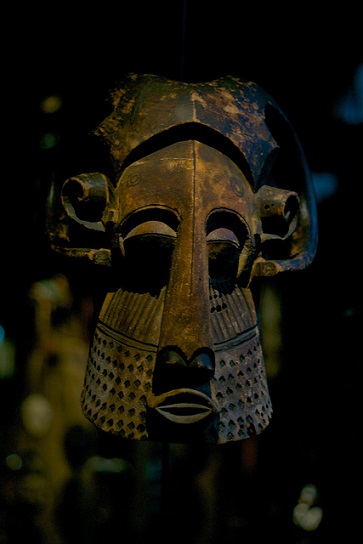
Image source: Julien Texier/Flickr
The Musée du quai Branly is the place to visit for people interested in international art or those who can’t handle looking at one more Renaissance-era painting. Situated close to the Eiffel Tower, the first thing you’ll notice about this museum is the lush vertical gardens covering its outer walls. They’re the first sign that this museum prides itself on its individuality. Inside are art and cultural objects from Africa, Asia, Oceania, and the Americas.
This is one of Paris’ newest museums, opened in 2006, and it makes good use of technological advances and interactive displays. Cutting through the middle of the museum is a winding sculptural “river’” with interactive panels, meant to connect the different exhibits and guide visitors through the museum.
Even people not normally interested in the sort of objects the Musée du quai Branly displays may enjoy visiting if they need a quiet refuge from the Eiffel Tower. There are no individual rooms and few displays to read, so the museum seems airier and less intimidating than most. Musée du quai Branly is also open later than almost all other museums in Paris (until either 7pm or 9pm each night), so it also makes a good option if you’re wondering what to do in Paris at night.
Churches
Best Known: Notre Dame Cathedral
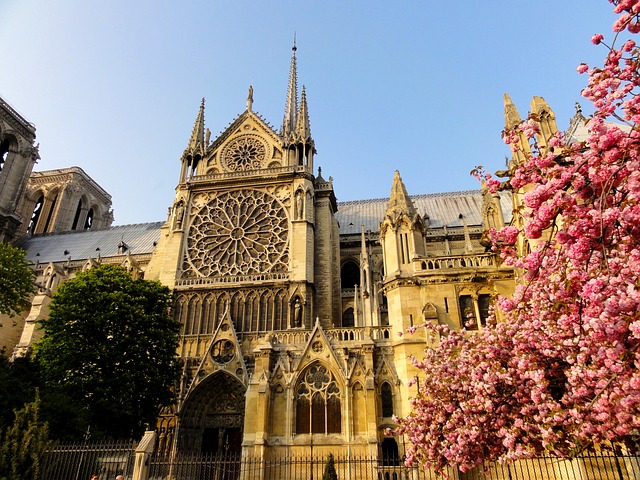
Visiting Notre Dame Cathedral, with its flying buttresses and rose stained-glass windows, is one of the top things to do in Paris, and practically everyone who visits the city makes it to this Gothic masterpiece. There is almost always a line snaking out the doors, but since admission is free and there is no checkpoint to pass, it moves quite quickly, so don’t be daunted. If you’d like to avoid the crowds anyway, try arriving early in the morning, before 10:00am.
You can also visit the bell towers (for a fee), but the wait is often several hours due to the limited number of people allowed up at a time. If you’re interested in doing this, try to get in line before doors open at 10:00am to reduce waiting time.
Notre Dame is located on the Île de la Cité, a small island in the middle of the Seine River and the historical center of Paris. In addition to Notre Dame, there are two other Medieval buildings on the island which you can visit: the Sainte-Chapelle church and the Conciergerie prison, where Marie Antoinette was held before her execution in 1793.
Sacré-Coeur Basilica
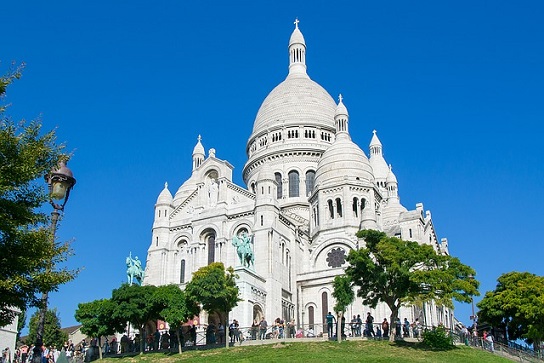
Despite its relative youth (it was only completed in 1914), Sacré-Coeur is a popular Parisian attraction, though not as highly visited as Notre Dame. Its attractive onion domes look straight out of the Byzantine, but there are a few clues that show Sacre-Coeur’s true age. Once inside, see if you can spot the anachronistic-looking painting of businessmen hidden amongst all the religious figures in the ceiling mural. They were added in recognition of some of the Basilica’s most important donors.
Sacre-Coeur was built on the highest point in the city, and reaching the top (either by taking a funicular or climbing a few hundred steps) offers fantastic views of Paris.
Surrounding Sacre-Coeur is Montmartre, one of Paris’ most interesting and popular neighborhoods. There are tourists here, but there are also art studios, bistros, and cobblestone streets leading to traditional walled gardens. It’s a great place to feel the bohemian vibe of a bygone Paris.
St. Denis Basilica
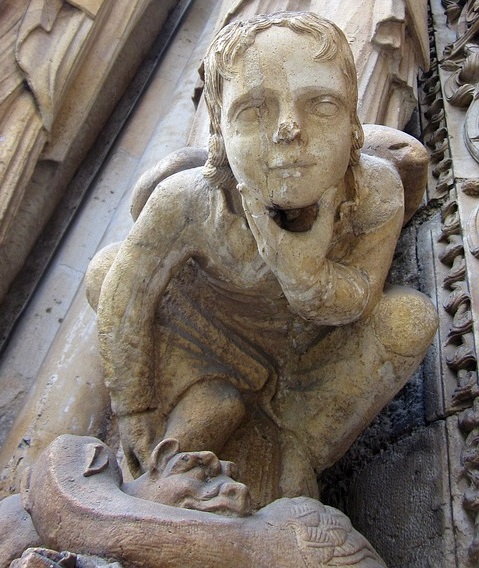
This is the church to visit for people interested in history (or royals or over-the-top tombs). Located just outside the city limits, in a northern suburb, St. Denis Basilica is an easy 20-minute ride on line 13 from the city center.
While hardly noticed by tourists, it is here that 43 kings and 32 queens of France, including Marie Antoinette, are buried. The site has been used as a burial place since Roman times, and nearly every French king between the 10th and 18th centuries came to rest here. The building itself is also important. Completed in 1144, it’s often considered the world’s first Gothic church.
Parks
Best Known: Luxembourg Gardens
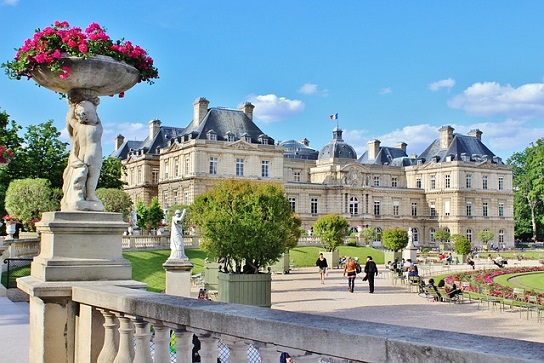
The wonderful thing about the Luxembourg Gardens is that they are hugely appealing to tourists yet not at all a tourist attraction. These gardens are well-loved and well-frequented by the citizens of Paris, and many Parisians spent their childhood afternoons launching toy sailboats into the ponds or playing games on the lawn. No matter when you visit, even at the height of tourist season in July and August, you can be sure that a fair percentage of the other people enjoying the Luxembourg Gardens are native Parisians, which is not true of many of Paris’ other top attractions.
After a day of rushing from one attraction to another, come to these gardens to see how Paris relaxes and join in on the (in)action. Stroll through the gardens, play a game of tennis, admire the fountains, or just pull up a chair (there always seems to be vacant ones) and let the afternoon drift by.
Père-Lachaise Cemetery
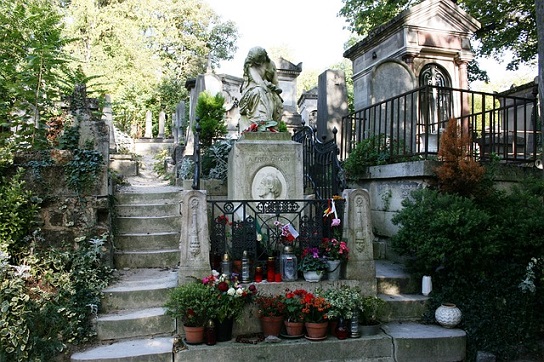
Père-Lachaise is, in fact, a cemetery rather than just a park, but it includes many walking paths as well as sitting areas within its confines. And this isn’t just any cemetery; Père-Lachaise is the place to be buried in Paris. It’s the largest cemetery within the city, with an estimated one million people buried here. Hundreds of famous names, both Parisians and foreigners, have made this their final resting place, and demand is so high for space that plots are often purchased only for 10, 30, or 50 years, to be exhumed when the “lease” is up and moved to another area.
Some of the most famous people to be buried in Père-Lachaise include writer Oscar Wilde, singer Edith Piaf, composer Frédéric Chopin, and, most visited of all, American rocker Jim Morrison. Morrison’s grave is, in fact, so popular that it has been fenced off and a guard posted nearby to prevent fans from doing illicit activities near (and on) his grave. Père-Lachaise can often feel like a maze with gravestones planted every which way, and finding a particular grave can be challenging. It helps to purchase a map at any of the shops flanking the cemetery before you plunge in. Additionally, the cemetery has been divided into different numbered sections to help you find your way, and there are signs at the main entrances that list where the most famous graves can be found.
The catacombs are typically the attraction tourists visit when they want to come face-to-face with death in Paris, but I find them to often be hurried and overly touristic. As an alternative, I recommend Père-Lachaise. There are no visible bones to gawk at, but it’s free to visit, you can wander at your own pace, and you’ll likely get a better sense of Paris’ history, the changes the city went through, and the luminaries who made this place their home.
Parc des Buttes-Chaumont
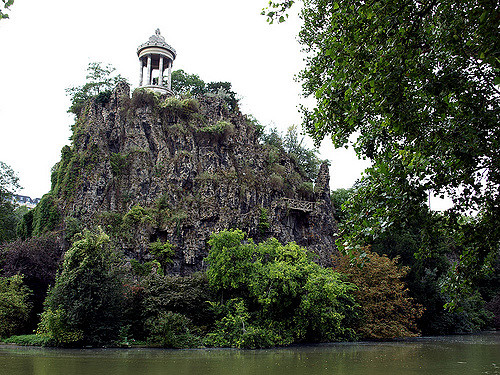
Image source: Ard Hesselink/Flickr
For those who like their parks a little wilder (and a lot less populated), Buttes-Chaumont is the place for you. Located in the 19th arrondissement, this park contains the standard flower beds, walking paths, and areas for play. In addition to all that, Buttes-Chaumont also has a collection of waterfalls, cliffs, and grottoes. This spot was formerly a quarry, which accounts for the steep changes in height throughout the park.
If you want a bit of a workout, follow the suspension bridges across the artificial lake to the rocky island situated in the middle. Here, you can travel the steep stairway to the island’s highest point, where a miniature Temple to Sybil (a copy of a famous Roman temple) is hidden among the trees. The bustle of Paris may as well be a world away.
The Best 3-Day Itinerary for Paris Attractions
Three days is a great amount of time to get a taste for the City of Light. Following this itinerary will ensure you hit all the major Paris attractions without getting burned out: you'll hit all of the must-see locations, but there's plenty of flexibility to customize the itinerary to your particular interests and energy level.
Day 1
Start your trip on Paris’ most famous street, the Champs-Elysées. At the end stands the Arc de Triomphe. Buy a ticket to climb a few hundred stairs to the top where you can survey the city you’re about to explore.
After you’ve gotten glimpse of the Eiffel Tower from afar, it’s time to visit it up close. Take the Metro to the Trocadéro stop where you can choose to go to the top of the tower or simply admire it from the ground.
After visiting the Eiffel Tower, visit the Musée du Quai Branly or the Musée de Rodin. After the sun goes down, you can watch the twinkling lights of the Eiffel Tower easily from either museum. The Musée de Rodin has great views of the Eiffel Tower from the gardens, while the tower is just a short walk from the Musée du Quai Branly.
Day 2
On day two, arrive at the Louvre about 30 minutes before doors open at 9am to reduce the chances of crowds and long lines. Once inside, you’re free to spend as much time as you’d like surveying its vast collection.
In the afternoon, get some fresh air by wandering the Ile de la Cité and Notre Dame. Ile de la Cité and the neighboring Latin Quarter on the left bank of the Seine River are some of the most attractive and historical parts of Paris, so spend some time enjoying the sites.
Afterwards, the Luxembourg Gardens are close to the Latin Quarter for a picnic dinner and relaxation, or you could stop by a museum you didn’t get to visit the first day.
Day 3
For the third morning, visit either the Musée D’Orsay, or, if you want a smaller and quicker attraction (or just aren’t interested in any more museums), take a self-guided tour of the Palais Garnier. Both are great examples of the beauty of Parisian architecture.
Spend the afternoon around the Montmartre area of Paris and visit the Sacré Coeur. This is a great area to have lunch and soak in the artistic, bohemian vibe in one of the many small cafes lining the streets.
You then have a couple of choices for what to do next. If you want to keep the church theme going, catch a train to the St. Denis Basilica and check out its Gothic architecture and historical tombs. Or, if you’d prefer the graves you visit to be a bit more recent, take a walk through Père-Lachaise Cemetery. Finally, if all you’re looking to do is relax, head over to the Parc des Buttes-Chaumont and enjoy the natural setting.










